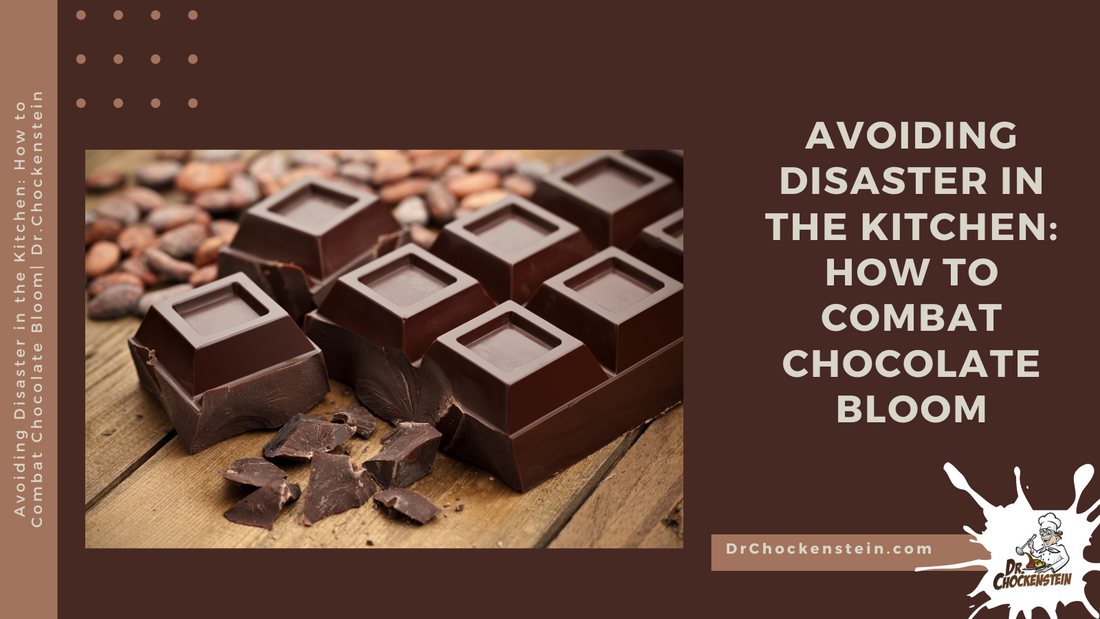
Avoiding Disaster in the Kitchen: How to Combat Chocolate Bloom
Share
Are you a passionate chocolate lover? Is there nothing more satisfying than a smooth, creamy bar of decadent dark chocolate? Unfortunately, whether dipping macarons or enjoying a piece of chocolate alone, your experience can quickly be ruined by something known as 'chocolate bloom.' In this post, we will discuss what exactly chocolate bloom is and provide some tips to help combat it so that your kitchen adventures are full of deliciously smooth chocolaty treats!
Chocolate bloom is a common problem that occurs when chocolate is not stored correctly or tempered. There are two types of chocolate bloom: sugar bloom and fat bloom.
Sugar bloom occurs when moisture comes in contact with the chocolate's surface, causing the chocolate's sugar to dissolve and then recrystallize on the surface. This results in a grainy texture and a dull, white appearance.
Fat bloom occurs when the chocolate is exposed to fluctuating temperatures or is not tempered correctly, causing the cocoa butter to separate from the chocolate and rise to the surface. This results in a greasy texture and a dull, white appearance.
To combat chocolate bloom, here are some tips:
- Store chocolate in a cool, dry place: Chocolate should be stored at a consistent temperature between 60°F and 70°F (15°C and 21°C) and away from sunlight, moisture, and strong odors.
- Tempering chocolate properly: Tempering is the process of melting chocolate and then slowly cooling it to a specific temperature. This allows the cocoa butter to solidify evenly, resulting in a glossy finish and a crisp texture. Several methods for tempering chocolate include using a double boiler or a microwave. Still, following a recipe or instructions carefully is essential to avoid overheating or underheating the chocolate. Read more about Tempering chocolate.
- Avoid temperature fluctuations: Chocolate should not be exposed to rapid temperature changes, such as going from a cool room to a warm kitchen or vice versa. This can cause condensation to form on the surface of the chocolate, leading to sugar bloom.
- Use fresh chocolate: Chocolate stored for too long or exposed to moisture or heat may already have sugar or fat bloom, so it is essential to use perfectly tempered chocolate for best results. Chocolate that has bloomed can always be melted down and retempered
Chocolate bloom can seem like a nuisance, but with a little knowledge, it’s quickly remedied. By understanding the environment in which chocolate is stored and used, you can prevent it from occurring in the first place. Additionally, if need be, you can always easily fix it by simply reheating your chocolate and tempering again. We recommend taking advantage of these resources and joining our mailing list for continued updates on all things related to chocolate adventures!
